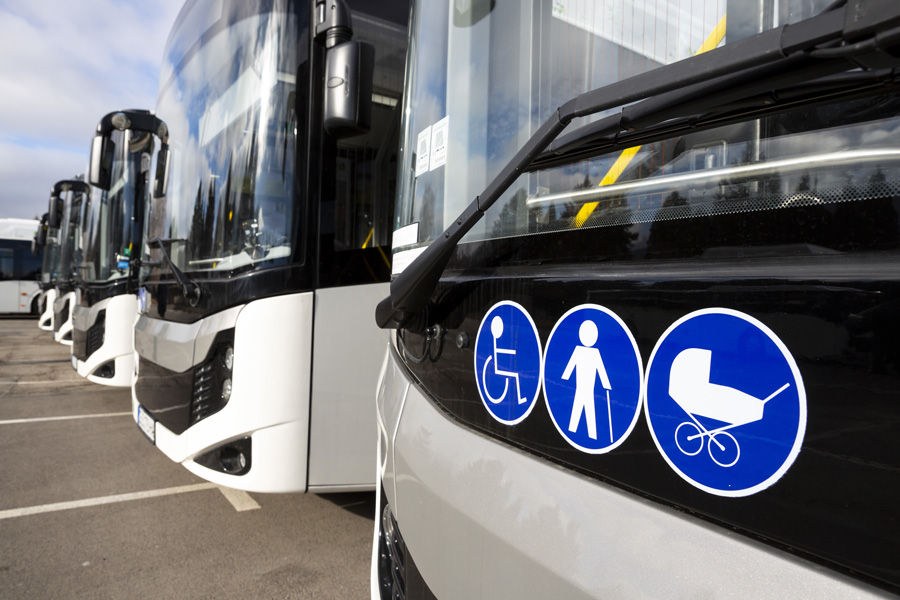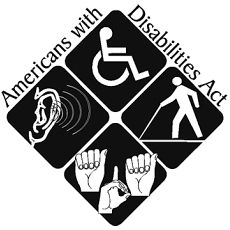
By Chris Przybylski
The Americans with Disabilities Act of 1990 (ADA)—which celebrates 30 years on July 26—is a civil rights law that prohibits discrimination against individuals with disabilities in all areas of public life. As it relates to luxury ground transportation industry operators, the law and its amendments apply to both employees of the company and its clients. As it relates to the luxury ground transportation industry, ADA compliance is generally “enforced” through lawsuits commonly filed by the U.S. Equal Employment Opportunity Commission, the Department of Justice, local government, or the affected individuals.
All business owners should familiarize themselves with ADA requirements to prevent situations like one that occurred in Phoenix, where the owner of a business was fined for having two of his 10 "reserved parking" signs posted a few inches too short.
This guide is broken down into sections based upon the employee’s role and training that should be provided to help ensure compliance. While by no means a comprehensive guide to all ADA regulations or DOT requirements, these bullet points should provide the basis for ensuring compliance and proper staff training.

Employment
- Applies to employers with 15 or more employees
- Complaints may be filed with U.S. Equal Employment Opportunity Commission (EEOC)
- Generally requires reasonable accommodations for existing employees or qualified applicants
- Requires no additional medical screen, other than that required of all employees
- Employers must post notices informing employees of their rights
Customer Service Staff
- Train on how to communicate with hearing impaired—offer email or text messaging
- Give basic training on how to accommodate other common ailments or equipment, including those with Alzheimer's, blindness, dementia, diabetes, mobility issues, assistance devices, or service animals
- Provide accessible vehicles or accommodations:
- Offer ramped or lift vehicles, and the approximate step heights of different vehicles
- Know which drivers can help with passenger mobility devices and are physically capable of assisting passengers into the vehicle
- Quote rates the same as passengers not requiring accommodations. For instance, a minibus may have to be sent for a sedan rate
- Allow service animals in the vehicles. They may not be required to be crated, stored in the rear of the vehicle, etc. You may designate specific vehicles as long as they are equivalent to those provided to the general public
- DO NOT tell a client or potential client that you do not provide accessible vehicles and refer them to another provider. Any company that owns a vehicle that seats more than eight passengers (including driver) and has purchased a vehicle since February 25, 1992, is required to provide accessible vehicles, even if none are available in your market, generally within 48 hours
- Prepare Form A for each passenger requesting accommodations and keep a copy for the office. The copy must be sent to the passenger within 24 hours; if mailed send by end of the next business day
All Chauffeurs
- Should receive training on assisting individuals with disabilities. This may include assisting passengers into the vehicle, accommodating an unexpected service animal, or an unexpected wheelchair or scooter user
- Should be trained on how to fold and store wheelchairs, scooters, and walkers:
- Remember that many of these devices are extremely expensive and impact the user’s mobility. Store them carefully to prevent any damage
- The driver or other company staff member must assist with storing accessibility devices, if requested
- Should be aware that passengers are not required to move to a seat from their mobility device, but may do so if they prefer
Accessible Vehicle Chauffeurs
- Train on testing ramps and lifts:
- All equipment should be inventoried and tested prior to every trip in case of an unexpected need
- Instruct troubleshooting knowledge, including automatic operation, manual override, battery reset, and fuse replacement
- Train on pushing wheelchairs onto and off of ramps and lifts.
- Passengers may elect to be loaded onto the vehicle facing toward or away from it, regardless of manufacturer specifications
- Train on proper tie-down procedures:
- Ideally two front, two back
- Avoid connecting to movable or removable parts
- If possible, ask the passenger preferred tie-down points
- Seatbelts should be offered, but may not be required unless required of all passengers
- Ask the passenger to lock the brakes, if available
- If you are unable to secure the wheelchair, service must still be provided
- Passengers may disembark and re-board the vehicle at any scheduled stop and may request additional stops to use an accessible restroom, which should be accommodated when possible
Over the road bus operators (OTRB) or operators with under luggage buses:
- Fixed-route vehicles must be accessible for large operators; small operators may provide equivalent service or qualify for an exemption under 191 allowing advance notice requirements. Small operators are less than $9.6M annual revenue
- Company must be able to accommodate within 48-hours for non-fixed routes either themselves of through another carrier
- Log any requests not accommodated
- Provide annual OTRB report
- Display evidence of ADA training
 ADA Website Requirements
ADA Website Requirements
In addition to having your fleet and workplace ADA compliant, it is essential that your website also be accessible to everyone. Your company’s site needs to readable and usable to the visually impaired and those with other disabilities. Failure to comply can open you up to potential lawsuits. If you’re unsure whether your webpage measures up to ADA requirements, the American Bus Association posted a great article that provides an extensive overview of online compliance.
OTRB annual filings are due the last Monday of October. Forms and documentation should be kept on file for five years:
- Form A AND Form B: All operators who own motorcoaches or under luggage buses are covered by these regulations
- Form C: Applies to operators using motorcoaches or under luggage buses for fixed routes
- Form D: All operators who own motorcoaches or under luggage buses are covered by these regulations
Reports should be sent to:
Federal Motor Carrier Safety Administration
Office of Information Management MC-RIS
1200 New Jersey Avenue, SE
Washington, D.C. 20590
There are a number of valuable online resources available for luxury ground transportation operators to ensure compliance. Consult these links to answer any questions regarding accordance: ADA Service Video, ADA Training Program for Motorcoach Operators, or Motorcoach Operator’s ADA Pocket Guide.
 Chris Przybylski of LBC Fleet, Safety & Compliance
Chris Przybylski of LBC Fleet, Safety & Compliance
A special thank you to Chris Przybylski of LBC Fleet, Safety & Compliance for providing an analysis of this issue. He may be reached at chris@lbcfleet.com.
[08.13.20]

